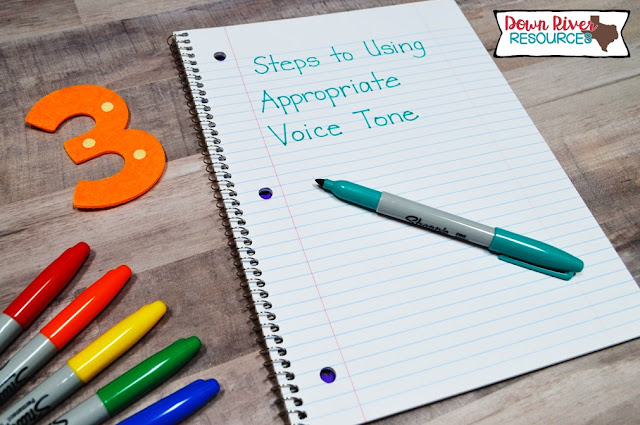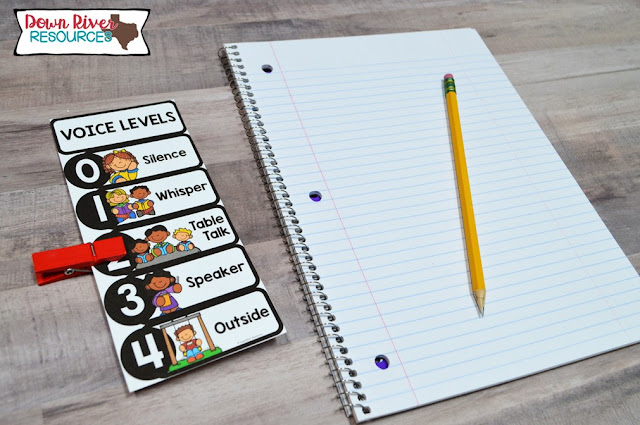Teaching How to Use the Appropriate Voice Tone Now
Think about your home growing up. I came from a home where the voice tone got a little loud, especially on Friday nights when the entire family would gather around the large round table to enjoy a fiesta of tacos and burritos. It might be an amusing sight, especially since I am of Eastern European decent, but surely a product of growing up along the United States-Mexican border! 'Ole!
Students usually bring the voice tone that they are accustomed to into the classroom. While I had to learn how to adjust my voice tone when speaking with a small group, some students live in a soft-spoken home. Students that come from this type of environment have to learn to use their speaker voice when addressing the class. These types of adjustments are necessary and teaching this social skill explicitly can save you a lot of time throughout the school year.
Students usually bring the voice tone that they are accustomed to into the classroom. While I had to learn how to adjust my voice tone when speaking with a small group, some students live in a soft-spoken home. Students that come from this type of environment have to learn to use their speaker voice when addressing the class. These types of adjustments are necessary and teaching this social skill explicitly can save you a lot of time throughout the school year.
The Importance of Social Skills
Social skills are sets of behaviors that help individuals interact with one another in ways that are socially acceptable and beneficial. Teaching children that there are new ways of thinking, new ways to feeling good, and new ways of behaving are reasons we teach social skills.
Social skills can be broken down in a step-by-step manner. By breaking down these skills, we identify the behaviors that need to be included to get the desired result. Making sure that each step is observable, we can instantly know if students are meeting the expectations.
Three Masterful Steps to Using Appropriate Voice Tone
1. Listen to the level of the voices around you.
2. Change your voice tone to match.
Supporting Students Visually with a Voice Level Chart
Standardizing a few simple volume levels for your classroom can prove helpful, especially as we encourage learning in a variety of settings.
We can use these volume levels as we directly teach using appropriate voice tone. Model these volumes before having small groups practice these voice tones.
Once you have these voice levels established in your classroom, you can clarify for each activity which level is most appropriate.
For example, before releasing your students to work with their small group on a math problem, you might say simply, “We are working at a voice level two.”
Once using this system, students become accustomed to the appropriate voice tone. When it becomes a regular routine, you do not need to spend any time on noting the voice tone for the activity unless needed.
Supporting Students Who Struggling Using Appropriate Voice Tone
Visual Cue
You can simply point to the voice level chart displayed in the room or hold up the corresponding voice level using your fingers.
Create a personal voice levels chart that students can keep on their desks. Add a colorful or seasonal clothespin that students can adjust based on the activity they are working on. Having this support on their desk helps students remember that they are to work using a certain voice tone.
Create a personal voice levels chart that students can keep on their desks. Add a colorful or seasonal clothespin that students can adjust based on the activity they are working on. Having this support on their desk helps students remember that they are to work using a certain voice tone.
Corrective Prompt
You can quickly refer to the visual voice level chart along with a corrective prompt.
As you smile, and in a positive voice, say: "Hey Josh, where's level 3?"
Coupling Statement
You can also use a coupling statement where you briefly describe the inappropriate behavior while offering the more appropriate alternative behavior. Say: "Josh, you walked into class using a Level 3 voice. Try coming in again using a Level 0."
I hope this post inspires you to teach this essential skill and if you'd like to use my voice level charts to help you along this process, you can find them in my TpT shop.
Teachers Need to Explicitly Teach Social Skills
After reflecting on my own teaching practice, I was curious how other teachers handle social skills. I reached out to my audience on Instagram and inquired:
Do you explicitly teach using the appropriate voice tone to your class?
Sixty percent of respondents stated that they had not taught this social skill.
If you want your students to use the appropriate voice tone in your classroom, you can to teach the process step-by step.
I hope this post inspires you to teach this essential skill and if you'd like to use my voice level charts to help you along this process, you can find them in my TpT shop.
What are some of the other social skills you are thinking about teaching explicitly to your classroom this school year?
Make sure to pin and save this post for future reference.









No comments